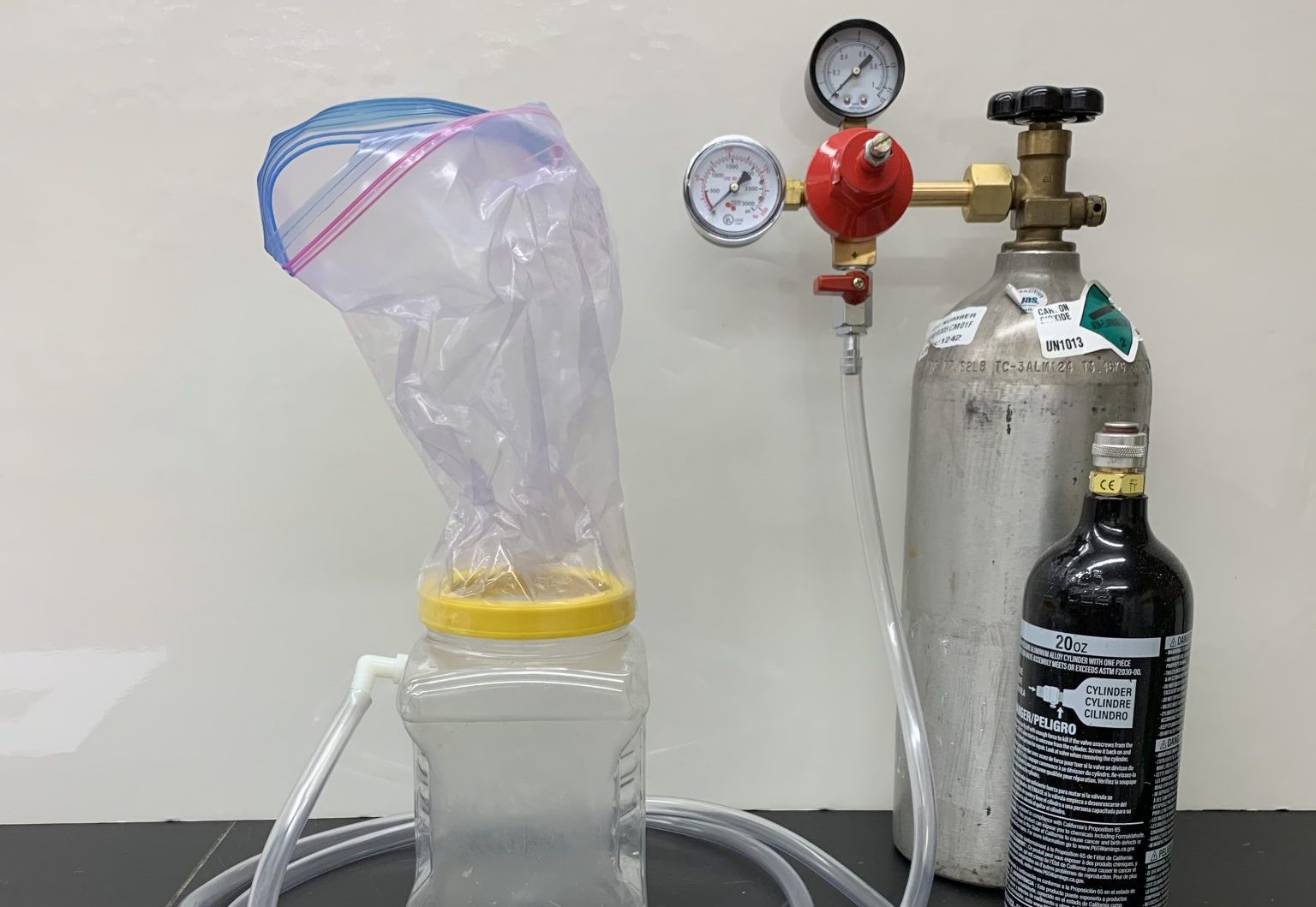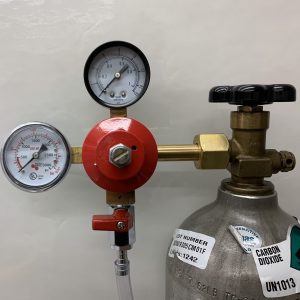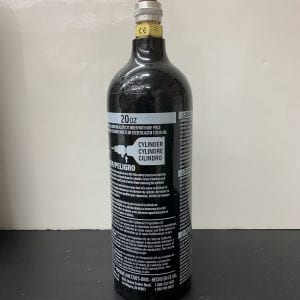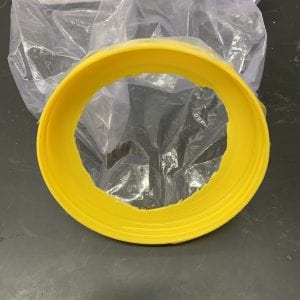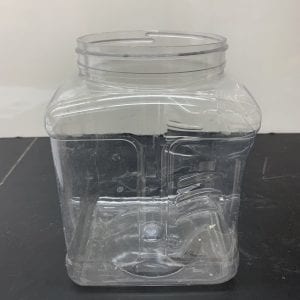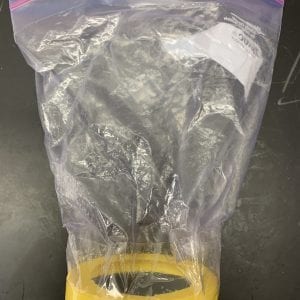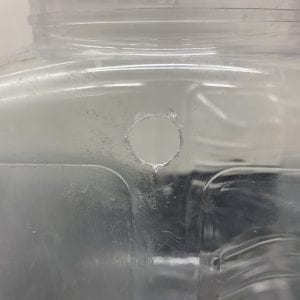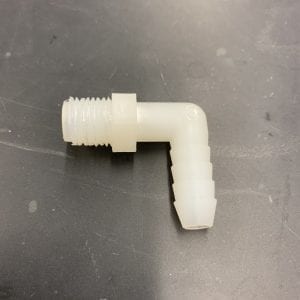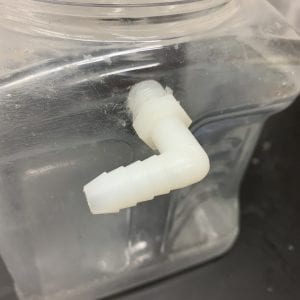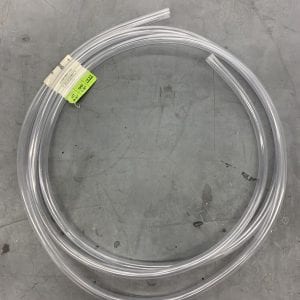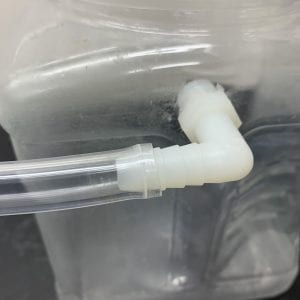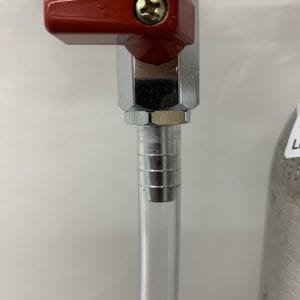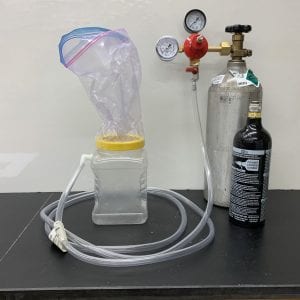Farming

Learn essential guidelines and safety measures for the use and setup of a CO2 Euthanasia System for a Single Chicken or Turkey.
This carbon dioxide system is for chicken and turkey euthanasia only.
Improper use of this tool can result in serious injury to the operator.
Supplies Required for Assembly
- Low-pressure series primary double gauge CO2 regulator
- 20-ounce CO2 tank
- Paintball thread to CGA 320 thread adapter
- Large plastic container (approximately 1/2 to 3/4 gallon)
- Sealable gallon storage bags
- Shipping tape
- 3/8-inch barbed barb x MIP elbow fitting
- Clear vinyl tubing, 3/8-inch ID x 1/2-inch OD (10 feet)
Carbon Dioxide System Setup
- Begin by attaching the regulator to the CO2 gas cylinder (figure 1). If a 20-ounce gas cylinder is used, a paintball thread to CGA 320 thread adapter may be needed (figure 2).
- Cut a hole in the lid (figure 3) of a large plastic container (figure 4) large enough to accommodate the bird’s head and neck.
- Cut a hole in the bottom of a gallon-sized plastic bag and secure the bag to the lid with tape to minimize gas escape (figure 5).
- Drill a 3/8-inch hole into the side of the container (figure 6) to route the CO2 from the tank to the container. Insert the nylon barbed elbow 3/8 inch by 1/4 inch (figures 7 and 8).
- Attach clear vinyl PVC flexible tubing (figure 9) that is 1/2 inch (outside diameter) by 3/8 inch (inside diameter) to the elbow fitting (figure 10) and the other end to the CO2 low-pressure regulator (figure 11). The carbon dioxide single bird euthanasia system is now assembled and ready for use (figure 12).
- Figure 1. Low-pressure series primary double gauge CO2 regulator
- Figure 2. Carbon dioxide gas cylinder
- Figure 3. Hole cut in the lid of a large plastic container
- Figure 4. Large plastic container
- Figure 5. Gallon-sized bag secured to the lid with tape
- Figure 6. A 3/8-inch hole drilled into the side of the container
- Figure 7. Nylon barbed elbow
- Figure 8. Nylon barbed elbow inserted into the hole on the container
- Figure 9. Clear PVC flexible tubing
- Figure 10. Clear PVC flexible tubing attached to the nylon barbed elbow
- Figure 11. Clear PVC flexible tubing attached to the low-pressure regulator
- Figure 12. Assembled carbon dioxide euthanasia system
Method of Application
- Restrain the bird in a kill cone or have another person restrain the bird for the operator.
- Open the CO tank valve. With the regulator valve 2 closed, adjust the regulator to 5 PSI.
- Insert the bird’s head through the plastic bag and into the container (figure 13).
- Gently hold the bag closed around the neck of the bird with one hand.
- With the other hands lightly open the regulator valve until CO2 release is audible for 20 seconds. Then close the valve.
- After 1 minute has passed (including the 20seconds in step 5), slightly open the valve again for 30 additional seconds. Then close the valve.
- After a total of 4 minutes has passed, check the bird for signs of life such as respiration, movements, muscle tone in the neck, voluntary blinking, or blinking when touching the eye.
- If there are no signs of life, the bird has been successfully euthanized and can be disposed of properly.
Checking for Signs of Death
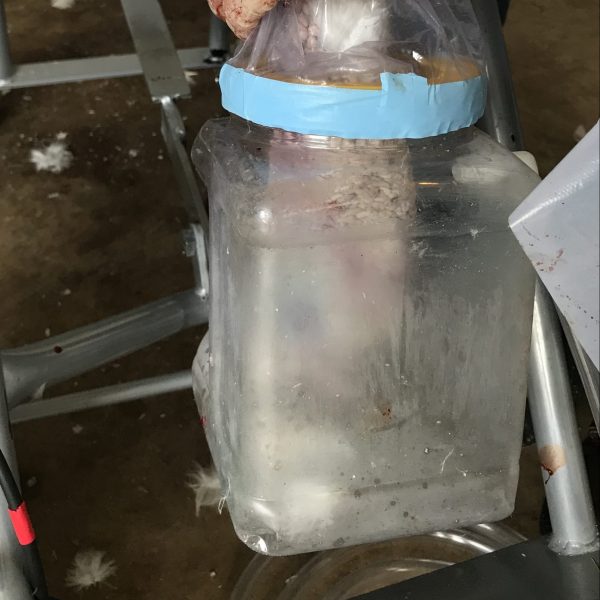
Figure 13. The head and neck of the bird are inserted into the plastic container. The operator gently holds the bag around the neck while applying the carbon dioxide.
Following are physical reflexes to observe following CO2 application. Continue observations until all reflexes have stopped for a total of 1 minute.
- Nictitating membrane. Induced blinking after gently tapping the inner corner of the eye; used to indicate brain-stem death
- Rhythmic breathing. Repeated opening and closing of the beak or movements of the sternum. When rhythmic breathing has stopped for 2 minutes, indicating brain-stem death, the animal will be considered in a state of nonrecoverable onset of death.
- Body movement. Uncoordinated movement of the body, legs, or wings, indicating unconsciousness and brain dysfunction
- Absence of a pain reflex. Firm comb or toe pinch (noxious stimulus) used to indicate unconsciousness and brain dysfunction
- Heartbeat. Absence of regular heart rhythm, indicating nonrecoverable onset of death
Euthanasia is successful when one application attempt is needed, with no signs of recovery (sustained and/or return of rhythmic breathing or reflexes) at 5 minutes after euthanasia application.

